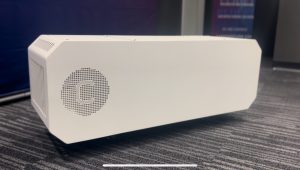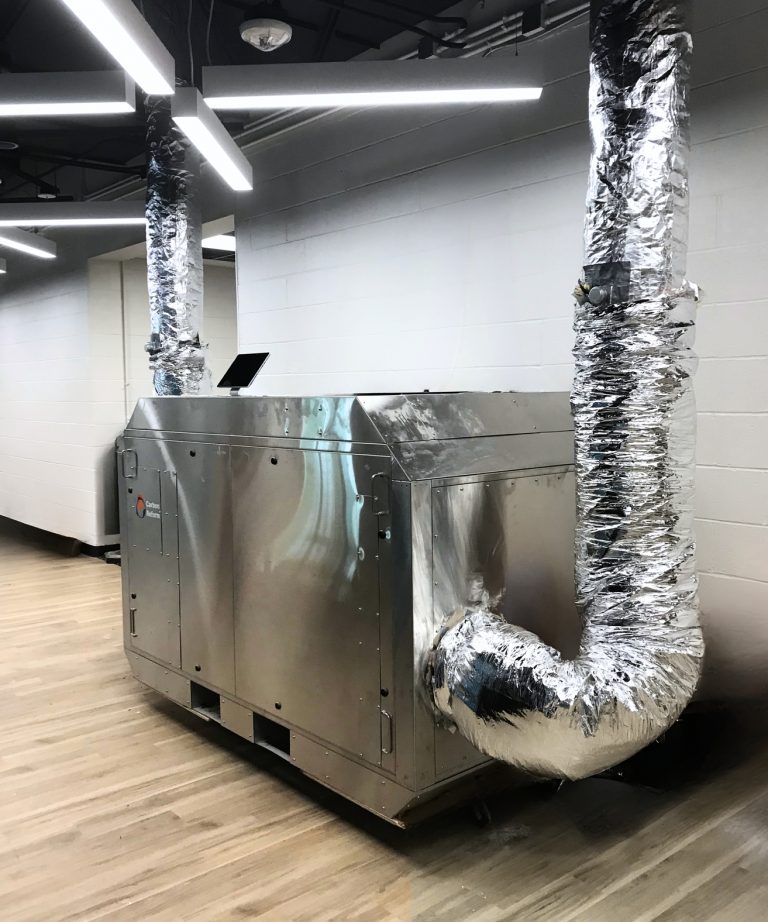- I ditched my daily driver Bose headphones for the XM6 - and I'm hesitant to go back
- This Lenovo ThinkPad is my top pick for remote work - and it's nearly 50% off now
- I invested in this 3-in-1 robot vacuum, and it's paying off for my home
- I've tested the Meta Ray-Bans for months, and these 5 features still amaze me
- My new favorite iPhone portable charger has a magnetic superpower - and it's cheap
Cleaner air, healthier buildings: How Carbon Reform is modernizing indoor environments for health and efficiency

As climate change accelerates, the need to make buildings more sustainable, energy-efficient, and healthier has never been clearer. While many climate tech solutions focus on reducing outdoor emissions, there’s a growing recognition that indoor air quality is also a growing issue. Americans spend about 90% of their time indoors, where pollutants like CO₂ and volatile organic compounds (VOCs) can accumulate, making indoor air up to five times more polluted than outdoor air. Poor indoor air quality isn’t just a health concern; it’s a barrier to productivity, energy efficiency, and climate goals.
Indoor air quality and the energy cost of buildings
High indoor CO₂ and VOC levels are increasingly linked to cognitive impairment, with a 2021 Harvard study showing that even moderate increases in indoor CO₂ can slow response times by 1.4-1.8% and reduce accuracy by up to 2.4% on cognitive tasks. Elevated levels of fine particulate matter (PM2.5) contribute to this decline, leading to productivity losses and symptoms associated with “sick building syndrome,” such as headaches and fatigue. HVAC systems, which are tasked with managing this pollutant load, are often forced to work overtime to maintain ventilation and indoor climate, driving up energy use and operational costs.
According to the United Nations Environment Programme (UNEP), buildings accounted for 34% of global energy demand and were responsible for approximately 37% of energy-related CO₂ emissions in 2022, presenting a significant opportunity for savings through advanced efficiency measures. Addressing this energy demand has substantial environmental impacts. The International Energy Agency (IEA) estimates that improving energy efficiency across sectors could reduce global energy use by over 40% by 2040, which would have a massive effect on emissions from buildings. Solutions that enhance indoor air quality while reducing HVAC energy demands are essential for meeting global sustainability targets and creating healthier indoor environments.
Recognizing the critical energy demands and emissions from HVAC systems, the Cisco Foundation’s Regenerative Future Fund — its climate investment program — identified Carbon Reform as a uniquely positioned startup with solutions that address both indoor air quality and energy efficiency.
Carbon Reform’s Carbon Capsule® and Carbon Canister®

Philadelphia-based Carbon Reform is tackling these intertwined challenges with their Carbon Capsule®. This system retrofits into existing HVAC setups to permanently capture CO₂, filter pollutants, and boost energy efficiency, offering a practical solution for building managers looking to modernize their infrastructure without major overhauls. In pilot projects, the Carbon Capsule® demonstrated the potential to reduce cooling loads by up to 50%, leading to energy savings, lower emissions, and cleaner indoor air. The company recently cut the ribbon on a pilot with Baltimore Gas and Electric (BGE), and won contracts with other major utilities, educational institutions, and corporations. They will be demonstrating their energy-saving indoor air quality (IAQ) technology in several more buildings in the coming months.
The Carbon Canister® serves as a portable companion device for scalable carbon sequestration in buildings, purifying indoor air while stabilizing captured CO₂. Carbon Reform’s full suite of solutions offers building managers a toolkit for decarbonizing their HVAC systems, reducing pollutants, and achieving energy savings — all critical steps for transforming the built environment.
A customer perspective: the Baltimore Gas and Electric (BGE) pilot

The pilot installation of the Carbon Capsule® at BGE’s Spring Gardens facility is an example of the technology’s potential real-world impact. Carbon Reform’s CEO, Jo Norris, noted that initial Carbon Capsule demonstrations in Philadelphia showed cooling load reductions of up to 50% and similar results are expected at BGE in both heating and cooling seasons. “When we spoke with BGE, they emphasized the importance of both energy reduction and employee wellbeing,” said Norris. “We’re excited to demonstrate how the Carbon Capsule will deliver on both fronts in the coming months.” For BGE, a company committed to reaching net-zero emissions by 2050, these savings represent a practical step toward meeting their Path to Clean goals. Additionally, Carbon Reform’s leasing model allowed BGE to adopt this innovative technology without major capital investment, making it easier to pursue their long-term environmental goals. This pilot underscores the value of Carbon Reform’s solution: an accessible, efficient way to improve indoor air quality while meeting ambitious energy and emissions targets.
Why Cisco Foundation’s Regenerative Future Fund Invested in Carbon Reform
The Cisco Foundation invested in Carbon Reform through its Regenerative Future Fund — part of the 10-year, $100 million commitment the Cisco Foundation made in 2021 to support climate solutions. The climate investments team within the Cisco Foundation addresses three main climate priorities also seen in Cisco’s corporate environmental sustainability strategy, the Plan for Possible: accelerating the clean energy transition, circular transformation, and investing in resilient ecosystems. Decarbonizing the built environment is one way to support global climate ambitions and resilient ecosystems.
Carbon Reform stands out in this space due to its uniquely integrated approach to carbon capture and air quality enhancement, addressing two critical issues simultaneously. While other startups focus on one aspect — either carbon capture or air purification — Carbon Reform’s Carbon Capsule® combines these capabilities within a single, modular system that works seamlessly with existing HVAC infrastructure. This dual-function technology allows buildings to become healthier and more energy-efficient while directly reducing their carbon footprint.
The Carbon Capsule® is designed to be easily installed in current systems, making it scalable across a wide range of buildings. This accessibility and scalability set Carbon Reform apart from competitors, especially for building managers seeking immediate improvements in air quality and energy savings. In addition, Carbon Reform’s hardware-as-a-service model aligns with industry trends toward flexible, subscription-based solutions, allowing organizations to adopt this technology without the need for large capital investments. You can learn more in this video:
Toward a decarbonized built environment
On the Cisco side, we’re also committed to improving indoor environmental quality through innovations like Meraki MT sensors and Cisco Spaces, which track near real-time air quality metrics such as CO₂ and VOC levels, providing valuable insights that help building managers create healthier indoor environments. While Cisco’s indoor air quality solutions monitor and optimize environments, Carbon Reform’s technology actively removes CO₂ and other pollutants, addressing an important gap in the industry, beyond Cisco’s value chain. Through the Cisco Foundation’s impact investing efforts, we’re providing Carbon Reform with support to help them scale effectively in a market that increasingly demands innovative solutions for healthier, more sustainable buildings.
By supporting Carbon Reform, Cisco Foundation is not only contributing to a decarbonized future but also championing a company whose technology exemplifies what we believe will be essential in the climate transition in the built environment. The Cisco Foundation Regenerative Future Fund is proud to be part of their journey, helping them make a lasting impact on the health of people and the planet.
Share:

